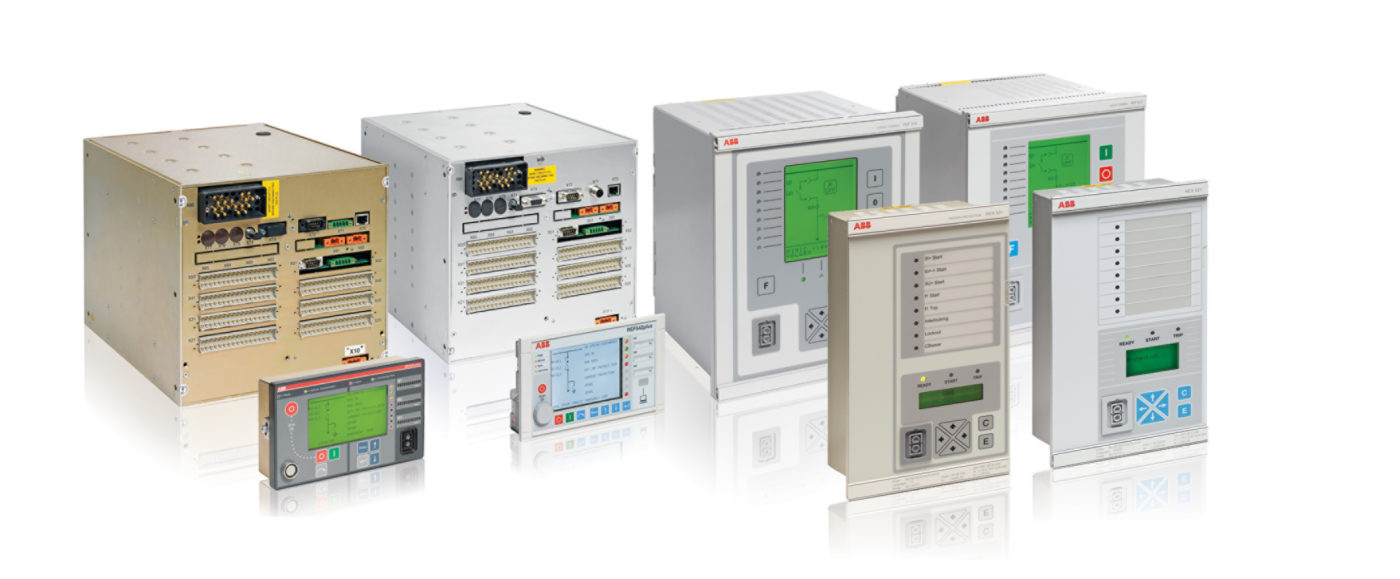What is Protection Relay?
A relay is nothing but a sensor, which senses an abnormal condition of an electrical circuit and closes its contacts. These contacts in turns close and complete the circuit breaker trip coil circuit which trips the circuit breaker by isolating the faulty portion of the electrical system from the healthy portion. Sometimes it also generates an alarm signal depending on the severity of the abnormality in the system.
Below you can see a basic protection relay scheme (Electro-mechanical Relay) which includes a CT (Current Transformer) or PT (Potential Transformer), Circuit breaker and the relay itself.

The secondary of the CT or the PT is connected to the relay. So whenever there is an abnormality in the system. The CT and the PT will feed the proportionate current and the voltage to the relay and depending on the settings the relay will decide whether to give an alarm or a tripping. If it is a tripping then the relay will send command to activate the trip coil circuit of the circuit breaker and the circuit circuit breaker will trip
The above diagram shows the interface of a typical Electro-mechanical relay with the CT, PT and Circuit breaker. The electro-mechanical relays broadly have a Current coil, a Voltage operated armature coil, Rotating disc and a spring mechanism for the restraining torque. So when ever there is abnormality in the circuit the CT will feed the proportionate current to the current coil and that will create a magnetism which rotates the disc against the spring torque. After certain degrees of rotation it will touch the tripping button in the relay and that will activate the tripping circuit of the Circuit breaker by closing the trip circuit.
The rotation time of the disc is nothing but the time delay in the relay depending on the fault level. We will go further deep into the topic regarding that Time delay, TMS (Time Multiplier Setting) and PMS (Plug Multiplier Setting) in our next article as this is just an overview of the protection relay.
Evolution of Relays
As I have already explained you regarding the electro-mechanical relays; Compared to them the Solid State Relays are known as the 2nd Generation Relays. With the invention in transistors and operational amplifiers, Solid state relays were developed and they are having more advantages than the electro-mechanical relays in terms of their flexibility and lesser power consumption, but now a day they are all getting replaced by the microprocessor based relays. Because the micro-processor based relays are having an upper-hand in terms of all the features as compared to the early generation relays. So now the question comes to your mind.
Why Numerical Relay?
These are all micro-processor based relays and they provide great precision in the application, but the most important thing is they bundle several functions in one case. Numerical relays are highly compact devices. They are very fast in operation and they have high sensitivity. They have a self-monitoring mechanism and they have low maintenance.
It involves Analog to Digital (A/D) conversion of analog voltage and currents obtained from the CTs and PTs. These digital samples are fed to the DSP (Digital Signal Processing) and after following the Algorithm the relay decided whether a fault is there or not.
Major advantage of Numerical Relays is that they go for Symmetrical Component Analysis and the continuously measure the Lower OrderHarmonics.
Comparison of Relays

Why to choose Numerical Relay over Conventional Relays?
Here is the reason why one should switch from conventional relays to the Numerical relays.

** Always remember that not all the micro-processor based relays are Numerical relays. Because the Numerical relays should have some mandatory features. If your digital relay is not having the below mentioned feature then it’s not a Numerical relay.
- In-build DSP
- It should be calculating Parameters
- Event Log
- Time Stamping
- Waveform
- RS 485 Communication or any other Serial communication
- Self-diagnostics

(MM30 Motor Management Relay by L&T)


